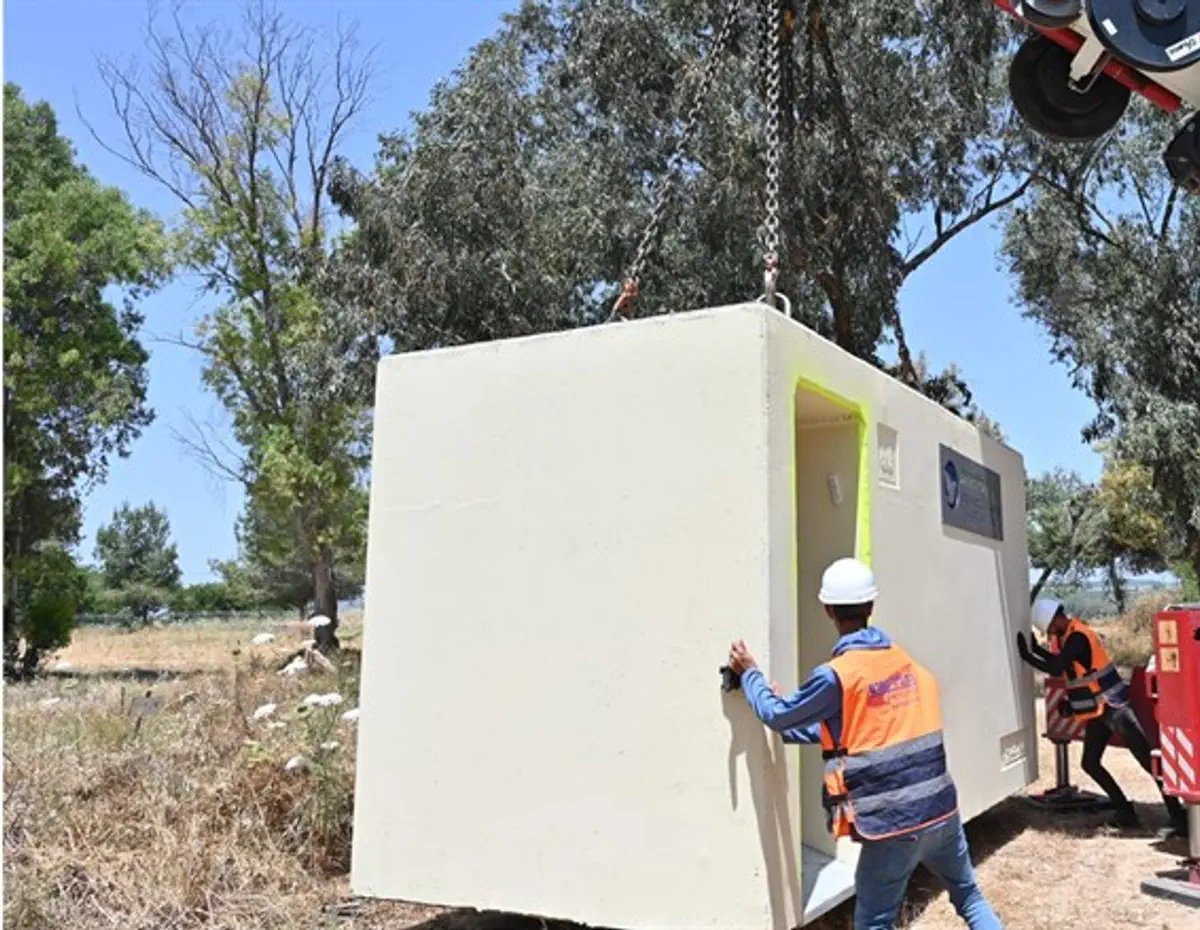The October 1 Iran attack was a harsh reminder of just how quickly things can escalate here, sending millions of Israelis scrambling for shelter as some 200 long-range missiles targeted cities and towns across the country. Almost nowhere was spared; sirens rang from Eilat in the south to Haifa in the north. Even those who rarely hear such alarms felt the urgency, knowing that this time, the threat was imminent.
Miraculously, no Israelis were killed. The message, however, is clear: everyone in Israel must have a plan for reaching safe shelter during an attack. Yet for the elderly and those with disabilities, this can be a daunting challenge.
Yad Sarah, Israel’s leading volunteer organization for home healthcare services, understands that getting to safety during a siren isn’t easy for everyone. As tensions remain high and the threat of more attacks hangs over us, we want to make sure everyone has the tools they need to stay safe.
That’s why this guide is here — to provide practical safety tips that will enable you to respond to future sirens with greater confidence and readiness. Remember, the moments you spend preparing now could make all the difference when there’s no time to waste.
Plan Your Route
If you or a loved one has mobility challenges, it’s essential to plan your emergency route ahead. Here are five steps you can take to preemptively ensure safe and timely access to your shelter:
1. Assess travel time – Measure how long it takes to reach your bomb shelter and compare it with the official safety guidelines provided by Pikud Ha’Oref (Israel’s Home Front Command). If you cannot realistically reach the shelter in the prescribed time, focus on identifying a safe alternative like a Mercha Mugan (a protected space) or a sturdy interior corner away from windows. Use cushions or blankets to shield yourself from potential exposure to flying debris.
2. Map out accessible routes – Identify the quickest and safest route to your bomb shelter (or a safe alternative), taking into account physical limitations or obstacles. Choose paths that avoid stairs or tight spaces if possible and look for accessible ramps and clear walkways.
3. Practice emergency drills – Regular drills help everyone become familiar with the route and reduce panic during an actual emergency. Encourage family members or caregivers to participate in these drills to ensure everyone knows what to do and where to go. It’s also a good idea to connect with neighbors who can help you reach your shelter if needed.
4. Maintain a manageable pace – Rushing can lead to accidents, especially for those who are unsteady on their feet. For example, one wheelchair-bound woman broke her foot at the start of the war in her haste to transfer herself to her wheelchair and reach shelter. Arriving safely is more important than arriving quickly. When moving to a shelter, focus on maintaining a steady, manageable pace.
5. Identify safe resting points – For those who may require breaks along the way, pre-identify safe resting points where you can pause. Choose locations with some protection, such as doorways or interior walls, to provide cover if needed.
Improve Accessibility Along the Way
Ensuring a safe path to shelter might require some practical adjustments. Here are five ways to make the journey quicker and smoother for those with mobility challenges:
1. Install handrails for stability – Handrails can provide critical support along stairways or pathways to the shelter, preventing slips or falls that can occur in the rush to find safety. Yad Sarah also has a special fall prevention kit designed to help elderly and disabled individuals maintain their balance. It includes a non-slip bath mat, grab bars, folding cane, anti-slip strips, and rug stabilization pads, among other items.
2. Keep mobility aids accessible – Mobility aids such as walkers, wheelchairs, or canes should be within easy reach. If you need to move quickly, having these tools nearby can make the journey to safety much smoother. Also, consider getting a personal emergency response system, like a necklace or bracelet, that can be worn at all times. In the unfortunate event of a fall or other emergency, these devices will alert response teams immediately, even if you can’t reach a phone.
3. Consider hoists and stair lifts – For individuals with severe mobility limitations, installing hoists or portable stair lifts can make a big difference. These devices facilitate movement up or down stairs, especially when reaching a shelter quickly is essential.
4. Add more pathway lighting – Power outages are common during emergencies. If you install battery-powered lights along the path to your shelter and use reflective tape to mark steps or uneven surfaces, you can prevent trips and falls, especially for those with impaired vision.
5. Prepare a shelter kit – Create a kit with essentials like water, medications, flashlights, and any necessary medical equipment. Keep this kit near your mobility aid or in a readily accessible spot so you can grab it quickly on your way to safety.
Preparedness is Key in Times of Emergency
By preparing ahead and creating a clear plan, you can significantly improve your chances of safely reaching shelter during an alert.
For further resources or assistance implementing home safety measures, contact your local Yad Sarah branch.
We’re here to help ensure that everyone, including those with mobility challenges, can navigate emergencies effectively.
